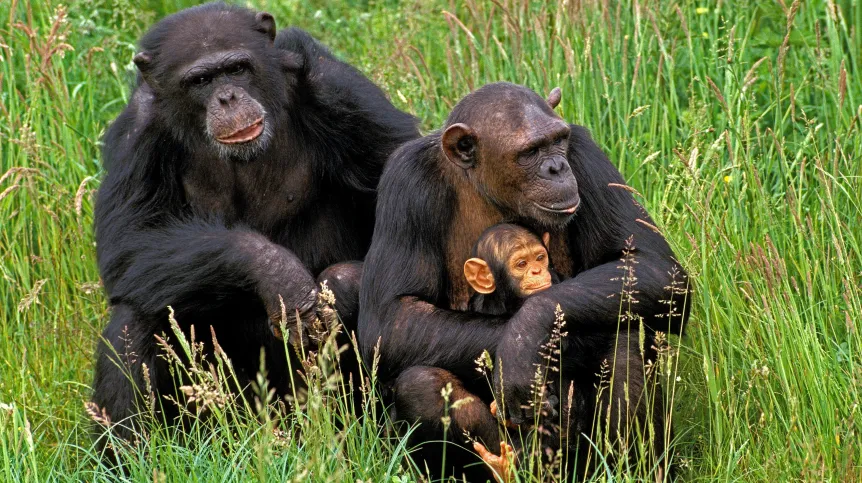
Ground-nesting chimpanzees help understand what prompted our hominin ancestors to move to a more ground-based niche. Neither a large body size nor the taming of fire are necessary conditions for hominids to sleep overnight on the ground, scientists have determined.
According to the University of Warsaw, a team of researchers from the Faculty of 'Artes Liberales' and from the University of Amsterdam conducted a study on the ground nesting of chimpanzees in the northern Democratic Republic of the Congo. The results were published in the prestigious journal Folia Primatologica.
Until recently, nesting on the ground was considered typical of gorillas, but appeared to be rare in most populations of chimpanzees. However, the researchers have found that chimpanzees also build nests where they spend the night, and this is not a unique behaviour.
Moreover, neither the large body size of gorillas nor the taming of fire are necessary conditions for hominids to sleep overnight on the ground. Human presence and hunting, however, appears to reduce the probability of ground nesting. Chimpanzees are more likely to spend the night on the ground where the forest is denser, there are more vine tangles, herb patches.
Ground nests made up more than 1 percent of total nests at 15 of the 20 survey regions. More than 10 percent of the Bili-Uéré chimpanzee nests were terrestrial, but the frequency of ground nesting varied extensively between the survey areas.
The researchers predicted that more human footprints and the presence of predators would be associated with fewer nests on the ground, as well as their larger sizes. The chimpanzees indeed nested at significantly lower heights with increasing distance from roads and settlements.
However, carnivore encounter rates had no significant impact on ground nest frequency or nest height.
A team of researchers led by Dr Thurston C. Hicks, now affiliated with the UW's Faculty of 'Artes Liberales', conducted an extensive chimpanzee nesting survey between 2004 and 2013 at 20 regions in the northern Democratic Republic of the Congo, where they found abundant ground nests across an over 50,000 km² region.
The first author of the paper 'Factors affecting nest height and ground nesting behaviour in Eastern chimpanzees of the northern Democratic Republic of the Congo' (https://brill.com/view/journals/ijfp/aop/article-10.1163-14219980-bja10010/article-10.1163-14219980-bja10010.xml) is Toni Romani, a doctoral candidate in the Nature-Culture program at the Faculty of 'Artes Liberales'.
PAP – Nauka w Polsce
kol/ bar/ kap/
tr. RL













